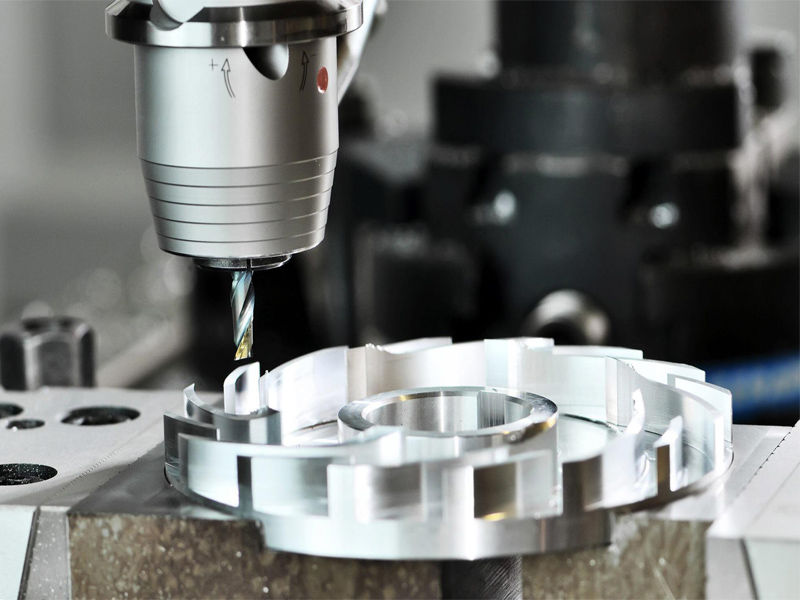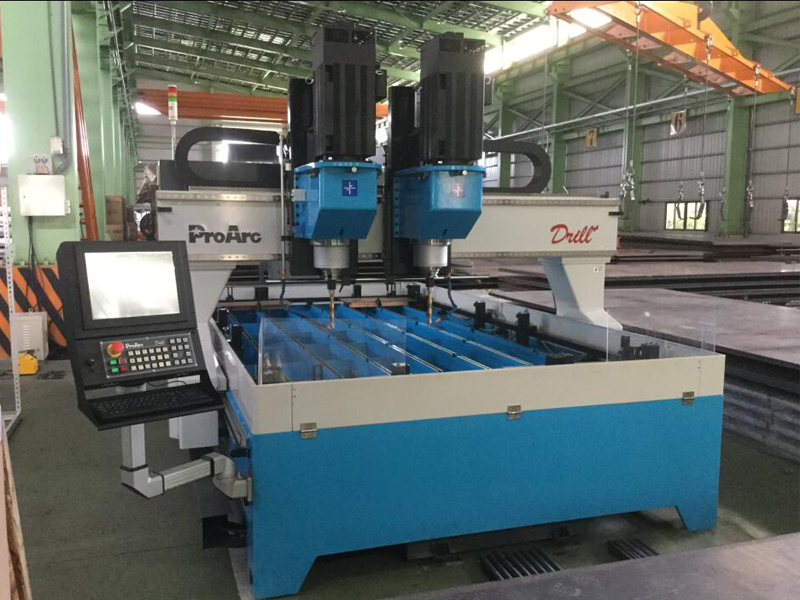BETTER TOUCH BETTER BUSINESS
Contact Sales at Lori.
CNC machining technology, with its diverse processes such as milling, turning, and drilling, enables the manufacturing of complex and precise parts. In this discussion, we will focus on CNC milling and CNC drilling to provide a deeper understanding of their characteristics, aiding you in making informed machining choices.
Regardless of which process (or combination of processes) you choose, your design can be transformed into a tangible product. However, the key to your decision lies in your design specifications and the requirements of the final product.
Next, we will compare the working principles of milling and drilling, tool configurations, accuracy standards, advantages, and application scenarios.
What is CNC Milling?
CNC milling, or numerical control milling, involves using rotary cutting tools to precisely shape a workpiece into a preset design. In a CNC milling machine, G-code and M-code digital instructions determine the tool's movement path and the amount of material to be removed. This automated control ensures product consistency and repeatability, all based on digital designs.
Milling technology is particularly suitable for handling designs with complex details due to its multi-axis tool motion. In addition to cutting, it can perform various operations such as drilling and engraving. Thus, milling technology is ideal for industries requiring high precision and complex structures.
What is CNC Drilling?
CNC drilling is a subtractive manufacturing method focused on creating precise holes in a workpiece according to CAD designs. This process typically involves single-axis movement, with a computer-controlled rotating drill bit making the holes. The drill bit size usually matches or is slightly smaller than the desired aperture.
Unlike other processes, CNC drilling is specialized for drilling operations and can use various bits depending on application requirements. It can produce straight holes, center holes, and other types of holes with the appropriate bit. Therefore, drilling technology is crucial in manufacturing electronic components, automotive parts, aerospace components, and mechanical assemblies.

CNC Milling and Drilling: Detailed Comparison
CNC milling and drilling are two highly regarded processes in CNC machining, each excelling in specific applications. Although they share similar machine configurations, accuracy standards, and control mechanisms, milling and drilling differ significantly in practice. Below is a detailed comparison of the two processes.
Workflow Comparison
The process of CNC milling begins by converting CAD designs into computer instructions that control tool movement. The workpiece is then secured using a vise, clamp, or fixture plate. The rotating tool removes material at a predetermined feed rate and speed. Throughout the process, multi-axis motion allows the tool to move flexibly around the workpiece, enabling the creation of complex shapes.
In contrast, CNC drilling focuses on creating precise holes in the workpiece. After positioning the workpiece at the predetermined drilling coordinates, the drill bit rotates at high speed and moves vertically (usually along the Z-axis) to create the holes.
Motion Path Difference
There are significant differences between milling and drilling in the motion path of the cutting operation. Milling tools move both horizontally and vertically during processing to cut complex shapes. This multi-axis movement makes milling extremely flexible for machining intricate parts.
In contrast, the motion path of the drilling tool is primarily vertical. This is because the main purpose of drilling is to create holes in the workpiece without needing to cut complex shapes.
Comparison of Tools and Settings
In CNC milling, commonly used tools include end mills, face mills, drills, and fly cutters. The choice of these tools depends on factors such as the workpiece material, cutting requirements, and machining accuracy. The workpiece is secured to the machine table, and the tool path is precisely controlled by programming.
For CNC drilling, the choice of drill bit is equally important and must be tailored to factors such as the workpiece material, hole depth, aperture, and surface finish. The drill bit is mounted on the spindle, and the workpiece is fixed to the machine table for the drilling operation.
Accuracy and Capability Considerations
Both processes perform well in terms of accuracy and can meet the demands of high-precision machining. However, they differ in accuracy and capability in specific situations. CNC milling is capable of manufacturing complex parts or products with an accuracy typically around ±0.005 inches (0.127 mm). CNC drilling, on the other hand, focuses on the accuracy and finish of the hole position, achieving tolerances as tight as ±0.002 inches (0.05 mm).
In terms of machining capacity, CNC milling can handle various types of parts, from simple slots to complex automotive engine components. CNC drilling, however, specializes in creating holes of different shapes and sizes, with drilling depths of up to 2600 mm and diameters typically ranging from 3 to 32 mm.
Material Adaptability
Both CNC milling and drilling are adaptable to a variety of material types, including metals, plastics, and composites. This versatility makes these two processes widely applicable in the manufacturing industry, meeting the processing needs of various materials.

Supported materials in CNC Drilling
aluminum
brass
Stainless steel
Hardened plastics such as polycarbonate and PEEK
However, milling has more material capacity than drilling.
Supported materials in CNC Milling
aluminum
brass
steel
titanium
Hardened plastic
Surface Finish Quality
CNC milling achieves a variety of surface finishes through its multi-axis movement and diverse tool configurations. With careful control, the surface roughness (Ra) value in milling can reach as low as 1.6 µm. In comparison, while the surface finish after drilling is also excellent, the Ra value may be around 3.48 µm. This value is influenced by factors such as depth of cut, material type, and speed, among other process parameters.
Due to this, the milling process tends to produce a finer surface finish, while drilling focuses more on the accuracy of the hole position and the finish of the hole wall. Additionally, milling primarily deals with the external machining of the workpiece, making it more convenient to achieve high-quality machined surfaces.
Specific Industries and Applications
When comparing milling and drilling, the application field is a critical consideration. CNC milling, with its powerful processing capabilities, can accurately machine any plane to any complex angle, such as bending and bottom cutting.
Applications for CNC Milling include:
- Complex parts in the automotive industry, such as cylinder heads, engine blocks, and transmission housings.
- Prototyping and development across various industries.
- Medical device components and implants.
- Precise reproduction of molds and tool manufacturing.
Despite the advantages of CNC milling for complex geometric shapes, the drilling process is indispensable for situations requiring precise cylindrical features.
Typical Applications of CNC Drilling include:
- Machining deep and small holes in various materials.
- Precise fabrication of fastener holes in aircraft fuselages and engines.
- Hole position machining during automotive assembly.
- Fabrication of precise and consistent holes for placing components on electronic boards.
Cost Consideration
CNC drilling and milling are excellent in terms of cost-effectiveness. Their precision, complexity, and quick turnaround capability justify the high equipment investment. However, when comparing the two directly, the cost of CNC milling is often slightly higher than that of drilling.
When analyzing costs, several factors must be considered. The cost of milling is influenced by the complexity of the workpiece, the type of material, machine setup time, production speed, and the number of processing steps. Similarly, the cost of drilling is affected by the depth of the hole, the size of the aperture, the number of holes, and the setup time for equipment and tools.
Delivery Time
Generally, CNC milling involves more complex parts processing, resulting in relatively longer lead times. In contrast, CNC drilling projects tend to have shorter lead times because they are more direct and focused on hole processing tasks.
However, the lead time for any particular milling or drilling project is affected by several factors. For milling, lead times depend on machining complexity, material type, setup time, accuracy requirements, and operator skill level. For drilling, lead times are influenced by the number of holes, hole depth, diameter, and setup time for equipment and tools. Therefore, these factors must be taken into account when evaluating delivery times.
Copyright © 2025 Shenzhen Lori Technology Co.Ltd. | All Rights Reserved.